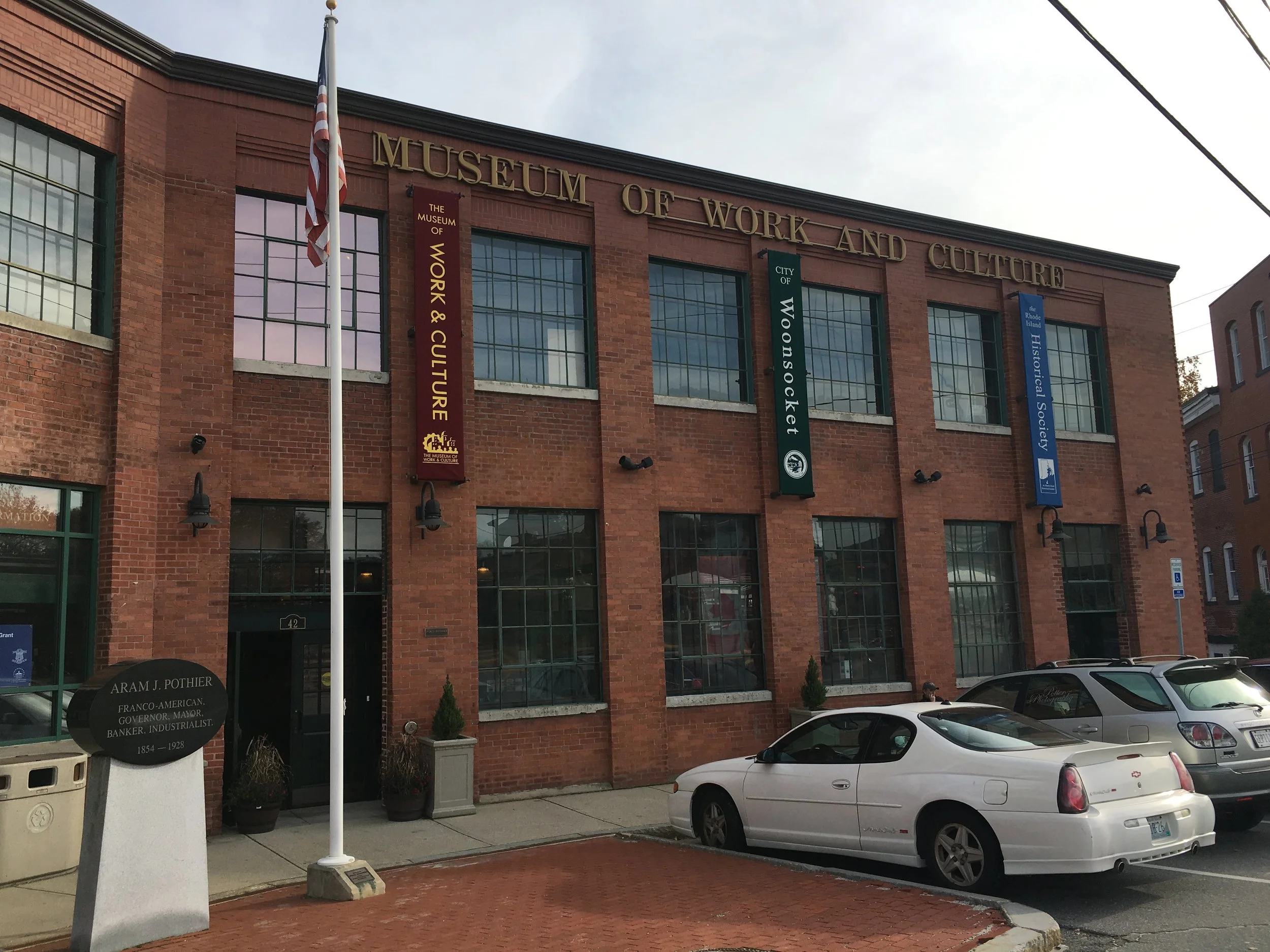On Saturday Jed and I met up with our friend and collaborator Emily at the Museum of Work and Culture in Woonsocket, RI. We were on a path of discovery to learn more about the people who worked in the Lippitt textile mills in the turn of the 20th century for our upcoming project with Lippitt House Museum, Back to the Work.
The Museum is dedicated to the French Canadians who moved to Woonsocket to work in the mills, and it certainly offered a lot of interesting insights into what the Industrial Revolution meant to everyday life. From the mechanization of work changing literal day to day existence to the changing psyche of moving from a product-driven society where you are paid for something created vs the amount of time spent working, the museum's exhibits gave us a lot to chew on.
Because Back to the Work is about looking at the work that sustained the Lippitt House originally and what that work looks like today, we took advantage of a gorgeous afternoon in Woonsocket after the Museum, and walked down to the building that was the Lippitt Mill. Today it's been converted into a home for low-income seniors.
It's impossible to walk the streets of Woonsocket and not see the trail of industrialization and then what happens when industry leaves for more profitable pastures.
Eventually we grabbed dinner at a Thai restaurant in Woonsocket (that also sells chicken wings) and talked about what we wanted to do next on our Lippitt trail.
It turned out to be a rural neighborhood surrounding a nature conservancy. Researching later, we discovered that the conservancy was Henry Lippitt's son's farmland which is now surrounded by a subdivision that was built up in the middle of the 20th century.
We decided while the sun was still up to travel to an area on the map we found near Cumberland, RI called "Lippitt Estates."
This Lippitt hunt made the Lippitt Mill in West Warwick irresistible. It closed in 2010 and is in the process of being converted into something new, and so is boarded up and hard to access -- plus by the time we got there it was dark -- but just driving past it and the twisty streets of West Warwick confirmed our desire to be back next Saturday along with a trip to Slater Mill in Pawtucket
It's hard to say exactly how all of this will manifest in Back to the Work, but we know that the opportunity to feel these locations in our bodies and glean what we can from the trajectory of industrialization is something that will no doubt inform our multi-sensory installation. We've wondered how to bring this work into that house, and by taking ourselves to the places where the money was made that financed the house, it seems impossible to do anything less.
